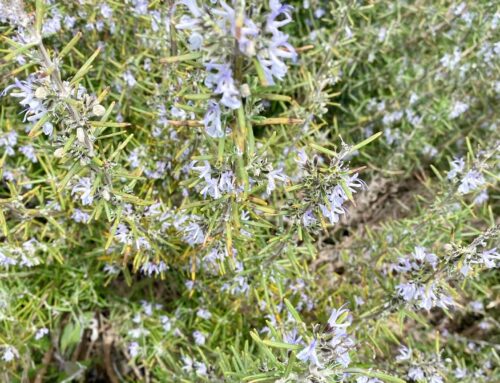
A busy day at our Arlington farmers market, packed with people even during 95 degree July days. Customers are drawn to this market for its freshness, selection, and diversity of local farmers, which operate within 125 miles of the city.
Customers at farmers market are often surprised to learn that our farm is only sixty miles from Washington, D.C. We’re part of the ‘green belt’ that surrounds the city, a circle of agriculture that begins when the suburbs finally run out of momentum. It’s no coincidence that housing subdivisions stretch about 45 miles in all directions outside of D.C., and that our farm is just beyond this fringe. To operate a livestock farm embedded within miles and miles of townhouses would not only require superior fences, it would also take incredible diplomacy skills.
On our farm, which raises grass-fed, free-range livestock, we basically have two destinations, each roughly sixty miles from the farm: a USDA inspected butcher shop, and our farmers markets in the nation’s capital. For us, this is the most expeditious way we know to properly (and legally) process our food, and then sell it. Still, even for our farm, which is as close to a major city as I could ever hope to be, ‘local food’ from our farm has done its fair share of traveling before it makes it onto a customer’s plate.

The vegetable stand adjacent to ours brings produce from their farm near Richmond, Va., about 100 miles away.
For example: every other Monday, I personally deliver hogs to our butcher just outside of Hagerstown, Maryland. Although there are two butcher shops that are closer to our farm (45 minutes instead of an hour), I choose to use this shop because of their impeccable standards, attention to detail, and humane treatment of my animals. (If, understandably, you feel that ‘humane slaughter’ is a contradiction of terms, then please understand that this butcher shop treats our animals with as much dignity and respect as I could ask for. Not all shops do). Two days later, on Wednesday, I turn around and haul cattle to the same place. One hundred and twenty miles, round trip, multiplied by two separate days.
The butcher shop we use is a small, family run business, and as ‘local’ as I am. As such, they need plenty of time to do their work, hence butchering pigs on one day, and cattle on another. Thursdays are dedicated to cutting and packaging the meat, which means that by the time Friday morning rolls around, I’m back in a truck (this time my refrigerated truck) and headed up the road once again for pick up. Sixty more miles, times two.
Suddenly, we’re already up to three hundred and sixty miles, and we haven’t even loaded the market truck yet. By the time I drive into Washington early on Saturday morning, this food has travelled almost four hundred miles to get to market (okay, the pigs and cattle were technically two separate 120 mile trips, but you get my point). Of course, I also must drive back home at the end of market, or I won’t be able to load my truck for the Sunday markets. Tack on sixty more miles.

Back and forth, to and fro. I've run this route so many times, the truck practically drives itself. Rest assured, I know every good coffee shop and clean restroom along this route.
For the sake of tidiness, let’s just bump this number up to a nice, round five hundred miles. Surprised? The same customers who were startled to learn that my farm is ‘only’ sixty miles away might be equally surprised to learn of this number. Am I still ‘local,’ or should a number such as this change your way of thinking about local food?
Now, before you march down the street with pitchforks and torches to your local farmers market yelling foul play, let’s take a moment to put these numbers in perspective. First of all, relative to ‘conventional’ food (mass produced, anonymous grocery store food) my numbers are a drop in the bucket. By the time all the ingredients of a t.v. dinner make their way to your freezer, the food has literally travelled thousands upon thousands of miles. Perhaps just as importantly, these ingredients weren’t produced with a fraction of the integrity or environmental sustainability that a trip to your farmers market will yield.
What about fruits and vegetables? Glad you asked. Fruits and veggies, which need little to no additional processing (relative to my livestock), must also travel a fair distance to get to the ‘local’ market. In my neck of the woods, many farmers markets maintain a 125 mile radius from which food can be grown. For several popular fruit and vegetable growers in rural West Virginia, the lower Shenandoah Valley, or central Pennsylvania, this means driving 250 miles round trip in a day. This is an improvement, perhaps, but still a long way for that food to travel.

Our simple truck and trailer rig. As soon as I get it back to the farm, Robert hoses it down. We may be a dirt farm, but we try to stay clean!
Also, when considering the challenges and nuance of ‘eating local’, please keep in mind that, as small producers, farms like ours take every measure to be as efficient as possible. I don’t just take up one cow or one pig to the butcher: I take four and ten at a time, respectively. Moreover, when I can, I pick up products while I’m there (though this is often challenging with having a ‘hauling’ truck, and having a ‘delivery truck’). Sometimes I’m able to save a trip, but I’m always trying to move as much food per trip as possible.
The bottom line is, ‘eating local’ is a complex issue. Even our free-range eggs, which travel straight from the farm to market, are compromised by the fact that our chicken feed has been brought from… you guessed it… about sixty miles away. On the flip side, our grass fed cows and sheep remain as local as possible right up to the moment they head off to the butcher.
In the end, is it possible to truly ‘eat local’? Staying informed and involved about food choices will better help answer this question. For the hardcore locavore, I suggest growing a garden oneself (or participating in a community garden), and if available, buying meat in bulk (thus keeping your carbon footprint relatively low). At the end of the day, growing one’s own food is the most reliable way to ensure local flavor. For the rest of us, the phrase ‘local food’ must remain an ever shifting, subjective and thought-provoking way of looking at how we eat.
 If you’d like to receive our blog each week, please like our farm! Smith Meadows Facebook
If you’d like to receive our blog each week, please like our farm! Smith Meadows Facebook







Leave a Reply